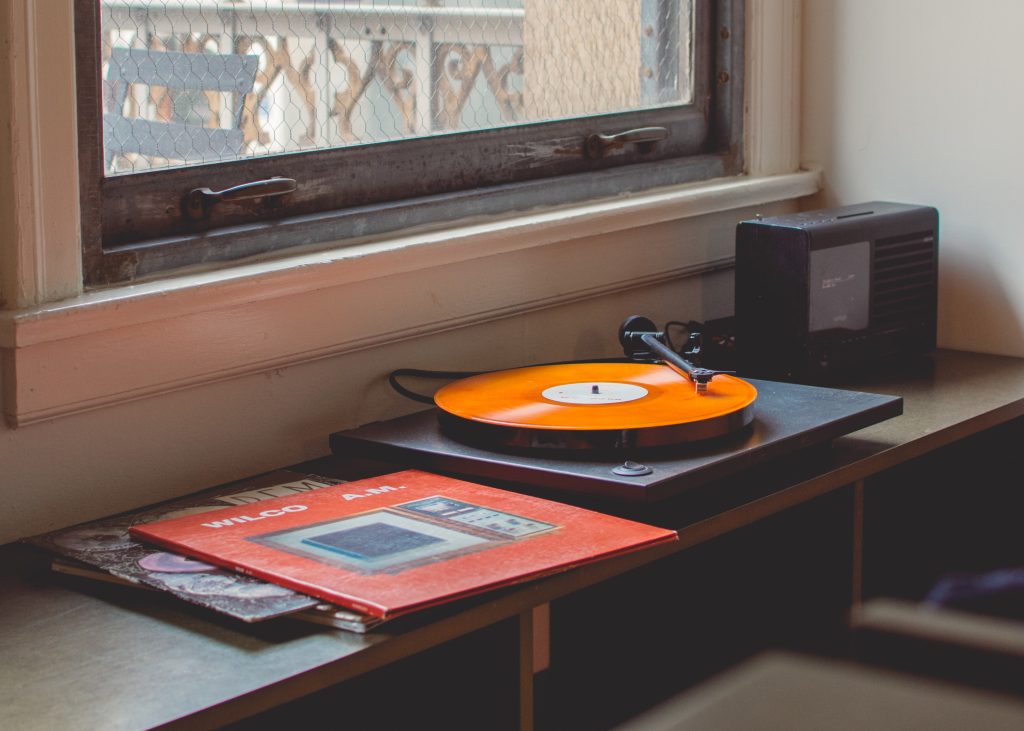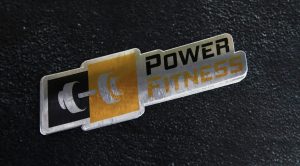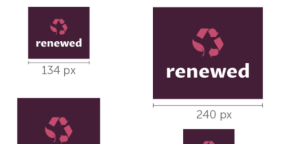Vintage logos are a popular design trend that has been gaining momentum in recent years. These logos often incorporate elements from past eras, such as old-fashioned typography, vintage illustrations, and muted color palettes. The result is a logo that feels timeless and classic, yet still relevant and modern.
If you’re looking to create a vintage logo for your business or brand, there are a few things to keep in mind. First, it’s important to understand the history and aesthetic of the era you’re drawing inspiration from. Whether you’re looking to create a logo that feels like it’s from the 1920s or the 1970s, doing your research and understanding the design elements of the time period will help you create a more authentic and effective logo.
Another key aspect of creating a vintage logo is finding the right balance between nostalgia and modernity. While vintage logos are often inspired by the past, they still need to feel fresh and relevant in order to resonate with modern audiences. This can be achieved by incorporating contemporary design elements, such as bold typography or bright colors, into your vintage logo. By striking the right balance between old and new, you can create a logo that feels both familiar and exciting.
Understanding Vintage Logos
If you’re looking for a way to evoke nostalgia and charm in your branding, vintage logos might be the perfect solution. These logos are characterized by elegant typography, retro motifs, and a sense of timelessness that can evoke warm sentiments. Here’s what you need to know about vintage logos:
Design Elements
Vintage logos often incorporate design elements that were popular in the past, such as:
- Faded textures
- Cursive or script fonts
- Serif fonts
- All-caps trademark text
- Retro motifs, such as arrows, stars, and badges
These elements are combined in a way that creates a cohesive and visually appealing logo that feels like it could have been created decades ago.
Color Palette
The color palette for vintage logos tends to be muted and subdued, with earthy tones like beige, brown, and green being popular choices. However, pops of color can be used to add interest and draw the eye. When selecting colors for your vintage logo, it’s important to choose shades that are soft and subtle.
Typography
Typography is a key element of vintage logos, and the right font can make all the difference. Serif fonts are a popular choice for vintage logos, as they have a classic and timeless feel. Cursive or script fonts can also be used to add a touch of elegance and sophistication.
Branding Applications
Vintage logos can be used in a variety of branding applications, from business cards and letterheads to websites and social media profiles. They are particularly well-suited for businesses that want to convey a sense of tradition, authenticity, and quality.
Overall, vintage logos are a great way to add personality and charm to your branding. By incorporating retro design elements, muted colors, and elegant typography, you can create a logo that feels both classic and timeless.
History of Vintage Logos
Vintage logos have a rich and fascinating history that dates back to the mid-19th century. These logos are known for their timeless appeal and ability to evoke a sense of nostalgia among consumers.
Origins
The origins of vintage logos can be traced back to the Industrial Revolution, when companies began to use branding as a way to differentiate themselves from their competitors. During this time, logos were often simple and straightforward, consisting of just a few basic elements.
As the 20th century approached, logos became more complex and began to incorporate a wider range of design elements. Companies began to experiment with different fonts, colors, and graphics, which led to the development of some of the most iconic logos of all time.
Evolution
Over the years, vintage logos have continued to evolve and adapt to changing trends and consumer preferences. Today, vintage logos are more popular than ever, with many companies using them as a way to stand out in a crowded marketplace.
One of the key features of vintage logos is their ability to evoke a sense of nostalgia among consumers. Many people associate these logos with a simpler time, when things were less complicated and life was more straightforward.
In recent years, there has been a resurgence of interest in vintage logos, with many designers and marketers incorporating them into their branding strategies. Whether you’re looking to create a new logo for your business or simply want to add a touch of retro charm to your marketing materials, vintage logos are a great choice.
Elements of Vintage Logos
Vintage logos are an excellent way to add a touch of nostalgia to your brand. These logos can evoke a sense of history and tradition while still being relevant in today’s world. Here are some of the essential elements that make up a vintage logo:
Typography
The typography used in vintage logos is often bold and distinctive. Serif fonts are commonly used, as they were prevalent during the time periods that vintage logos often reference. However, sans-serif fonts can also be used effectively, especially in more modern takes on the vintage style. The key is to choose a font that is easily readable and aligns with the overall aesthetic of the logo.
Color Palette
The color palette of vintage logos is typically muted and earthy. Colors like brown, beige, and cream are commonly used, as they evoke a sense of nostalgia and warmth. However, pops of color can also be used to add interest and draw attention to specific elements of the logo. When choosing colors for your vintage logo, consider the emotions and feelings you want to evoke in your audience.
Imagery
The imagery used in vintage logos often references the time period or industry that the brand is associated with. For example, a vintage logo for a barber shop might feature a classic barber pole or a straight razor. A vintage logo for a farm might feature a silhouette of a tractor or a farm animal. The key is to choose imagery that is easily recognizable and aligns with the overall aesthetic of the logo.
In summary, vintage logos are a great way to add a touch of nostalgia and tradition to your brand. By using bold typography, a muted color palette, and relevant imagery, you can create a logo that is both timeless and relevant in today’s world.
Creating Vintage Logos
If you’re looking to create a vintage logo, you’re in the right place. Creating a vintage logo can be a fun and rewarding experience. In this section, we’ll cover everything you need to know to create a vintage logo that stands out.
Inspiration
Before you start designing your logo, it’s important to gather inspiration. Take a look at vintage logos from different industries and see what elements they have in common. This will help you get a better understanding of what makes a vintage logo stand out.
Here are some places to find inspiration:
- Pinterest: This is a great place to find vintage logos from different industries. You can create a board and save all the logos that inspire you.
- Behance: Behance is a platform for creative professionals to showcase their work. You can find vintage logos from different designers and get inspired by their work.
- Dribbble: Dribbble is a community of designers sharing their work. You can find vintage logos from different designers and get inspired by their work.
Design Process
Once you have gathered inspiration, it’s time to start designing your logo. Here’s a step-by-step process to help you create a vintage logo:
- Choose a color palette: Vintage logos typically use muted colors such as brown, beige, and black.
- Choose a font: Vintage logos typically use serif fonts. Look for fonts that have a classic feel to them.
- Choose an icon: Vintage logos typically use icons that are related to the industry. For example, a vintage logo for a coffee shop might use an icon of a coffee cup.
- Sketch your ideas: Start sketching your ideas on paper. This will help you get a better understanding of what you want your logo to look like.
- Digitize your sketch: Once you have a sketch you’re happy with, digitize it using a software like Adobe Illustrator.
- Refine your design: Refine your design by tweaking the colors, font, and icon until you’re happy with the final result.
Tools
Here are some tools you can use to create your vintage logo:
- Adobe Illustrator: This is a vector graphics editor that is perfect for creating logos.
- Canva: Canva is a graphic design platform that has a variety of templates and tools to help you create your logo.
- Logo Maker: Logo Maker is an online tool that allows you to create a logo in minutes.
With these tools and the steps outlined above, you’ll be able to create a vintage logo that stands out.
Significance of Vintage Logos
Vintage logos have become increasingly popular in recent years. They offer a sense of nostalgia and timelessness that resonates with many audiences. In this section, we will explore the significance of vintage logos in terms of brand identity and audience appeal.
Brand Identity
A vintage logo can help establish a brand’s identity by communicating a sense of history and longevity. It can also convey a sense of quality and craftsmanship that is often associated with the past. By using a vintage logo, a brand can differentiate itself from competitors and create a unique visual identity.
Audience Appeal
Vintage logos appeal to a wide range of audiences, from those who lived through the era being referenced to younger generations who appreciate the aesthetic. They can evoke feelings of nostalgia and comfort, as well as a sense of authenticity and tradition. By using a vintage logo, a brand can tap into these emotions and create a connection with its audience.
Overall, vintage logos offer a unique and effective way to establish a brand’s identity and connect with its audience. Whether you’re a heritage company looking to communicate your decades of experience or a new brand looking to differentiate yourself, a vintage logo can help you stand out and make a lasting impression.
Examples of Vintage Logos
Vintage logos are a great way to add a touch of nostalgia and personality to your brand. Here are some examples of vintage logos to inspire you:
1. Coca-Cola
Coca-Cola’s vintage logo is one of the most recognizable logos in the world. The script font and the red and white color scheme have remained largely unchanged since the logo was first introduced in 1887.
2. Levi’s
Levi’s vintage logo is a classic example of a logo that has stood the test of time. The red tab logo was first introduced in 1936 and has remained largely unchanged since then.
3. Harley-Davidson
Harley-Davidson’s vintage logo is a great example of a logo that captures the spirit of the brand. The winged logo was first introduced in 1910 and has been a symbol of freedom and adventure ever since.
4. Ford
Ford’s vintage logo is a great example of a logo that has evolved over time. The original logo was introduced in 1903 and has undergone several changes since then. The current logo, which features the blue oval and the Ford script, was introduced in 1976.
5. Jack Daniel’s
Jack Daniel’s vintage logo is a great example of a logo that captures the spirit of the brand. The logo, which features the iconic Old No. 7 brand mark, has remained largely unchanged since it was first introduced in 1955.
Vintage logos are a great way to add personality and nostalgia to your brand. Whether you’re looking to create a new logo or update an existing one, these examples are sure to inspire you.
Future of Vintage Logos
Vintage logos have been around for decades and have become increasingly popular in recent years. But what does the future hold for these classic designs? Will they continue to be relevant in the ever-changing world of branding and design?
One trend that is emerging is the blending of vintage and modern design elements. Brands are taking classic logos and giving them a modern twist, incorporating sleeker fonts and more minimalist designs. This allows companies to maintain a sense of nostalgia while still appealing to modern consumers.
Another trend is the use of vintage logos in digital marketing. As more and more businesses move online, vintage logos can help create a sense of authenticity and history. They can also be used to evoke a sense of nostalgia and emotion, which can be a powerful marketing tool.
In addition, vintage logos are becoming more versatile. They can be used in a variety of mediums, from print to digital to merchandise. This makes them a valuable asset for any brand looking to create a cohesive and recognizable identity.
Overall, the future of vintage logos looks bright. As long as brands continue to find new and innovative ways to incorporate these classic designs into their branding, they will remain a relevant and effective tool for years to come.
Angela Irwin is a branding and design enthusiast with a Bachelor of Fine Arts in Graphic Design from Meadowbrook College. As a writer at Logocreator.io, she shares her expertise on logo design, graphic trends, and effective branding strategies, helping businesses create impactful visual identities.



